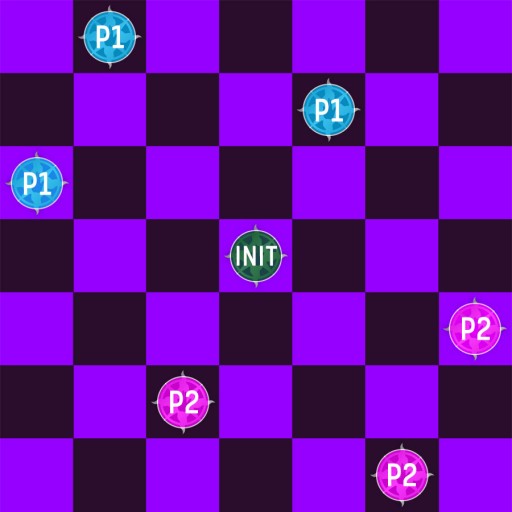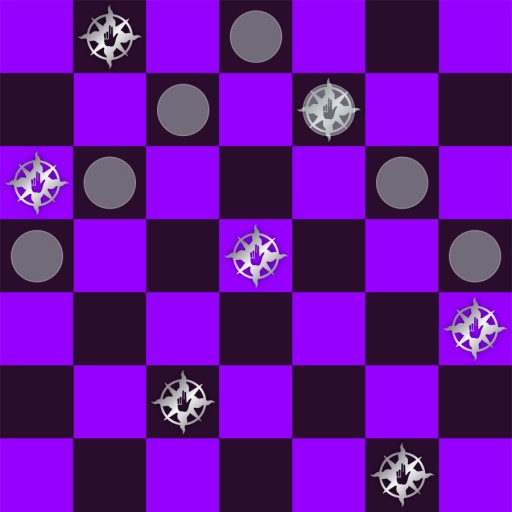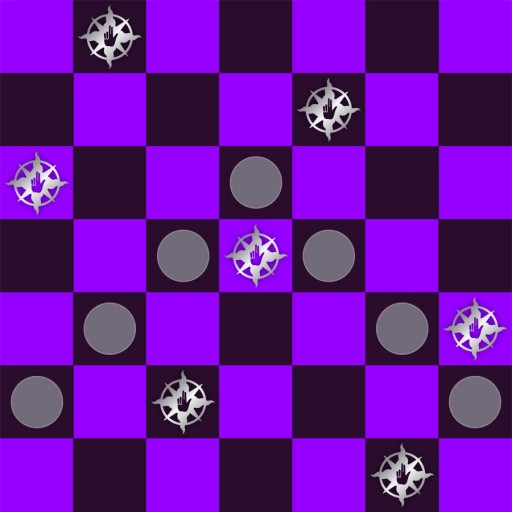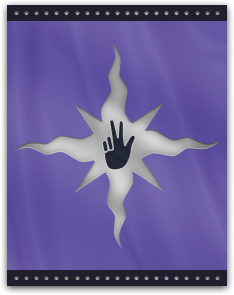Anarchist Tablero
Anarchist Tablero has been a household game since just after the Founding (Circa 1993). A bastardized version (created by Uthyr the Bastard) of the more widely-known da’Gucci Tablero, Anarchist Tablero complicates the rules just enough to make it much more difficult to win while drunk. Not that we all haven’t tried. Frequently. This is the Standard Household Game, and playing any other version is not only frowned upon, but may also be cause for Inquisition.
During the plague-times of 2020-2023, we often drank alone, even if we were using the cold-blue glow screens we’ve all come to know and love. We still figured out ways to play our favorite game with each other on the ubiquitous demon picture boxes. As we slowly reintegrated with the other “humans” that survived the RNA-OMG-GMO-DNA-NDA-infusions, we also started using something we called the “side cup” for games of Tablero. This is the newest of variants in the ever evolving game of Anarchy Tablero, and completely acceptable. Bring your favorite vessel to the game. Pour your shots into your own bev-tube, and drink it down without fear of the ‘germy-germs’ of your ‘pony-ponnents’. English Translation: Keep your nasty diseases to yourself, RABBLE. I’m drinking outta my own cup!
Board
- The game board is a 7×7 grid of 49 squares (about 2×2 in. each).
- Seven (±2 oz.) shot glasses and 2d6 (two 6-sided dice) are used in the game.
- Any kind of beverage can be used. Each player supplies 2 cans/bottles of identical size, or agreed upon variants. Typically 12-16 oz each. When using hard liquor, it is recommended that smaller shot glasses be used. You can use counters, coins, jellybeans, M&Ms, Skittles, Raisins, etc. As long as quantities are equal for each player, and there are enough tokens to represent about 32 “fills” of the cups.
- The board is marked in seven locations called Anarchy Squares, arranged upon the board so that no Anarchy Symbol lines up in a straight or diagonal line with any other.
Game Rules
The standard game is played with two players. To win a round, you roll dice and move cups filled with beverage in and attempt to line up six or seven cups in a straight, diagonal, or chevron-shaped line on the squares of the board. There are sneakier ways to win as well. The overall objective of the entire game is to drain your opponents beverages while retaining as much of yours as is possible. There are many ways to win, among those ways are:
- The first way is to create a line of at least six cups in a straight unbroken line anywhere on the board (horizontal, vertical or diagonal).
- The second way is to create a line using seven cups. This is more difficult than a line of six, and brag-worthy.
- The third way is to create chevron using all seven cups (See examples below). This is extremely difficult, and very brag-worthy indeed!
- Another way to win is to cheat. This is completely legal, as long as you don’t get caught. (Seriously).
- Rarely used: Forming a line of five cups for a line is (barely) acceptable ONLY if the player currently in control has less than half a game beer left and their opponent has at an unopened game beverage. Arguably the weakest move in the Anarchy Tablero rulebook, only Franks take a line of 5. See the Stop it Frank rule (See below).
Sometimes a player is unable or unwilling to drink the beverage of the game, and this is when a third player enters the game as what is commonly referred to as the “stunt-drinker” — this is completely viable and legal. One player plays the play, and the stunt-drinker takes the hard hits. All players must agree to this arrangement beforehand. As with all things. Consent is Key.
The game is supposed to be fun. Take these rules with a grain of salt. No one likes a Rules Lawyer. If in doubt, the Prophet of House DAOS has the FINAL WORD on all game rules and matters. That’s how it works in an anarcho-syndicalist commune. We take it in turns to act as a sort of executive officer for the year… Strange women lying in ponds distributing swords is no basis for a system of government. Supreme executive power derives from a mandate from the masses, not from some farcical aquatic ceremony!
Setup
- Each player provides two equally-sized containers of a drinking beverage — usually beer or hard cider in 12-16 oz containers. 32oz per player per game is typical.
- Place one shot glass (called cups) on each of the seven marked locations shown below.
- Each player fills three of the shot glasses, leaving the center glass empty. Shown here as Player 1 (P1), Player 2 (P2), and INIT as the as of yet unfilled cup.
Determine Prophet’s Number (aka Queen’s Number)
- The Prophet’s Number is rolled at the start of the game and does not change until a winner is declared and toasts are made.
- This number is typically rolled by a bystander, preferably a Prophet, or former Prophet or House Daos Member, but it can be anyone.
- The Prophet’s number is determined by adding up the combined total of both dice; for example: Molly rolled a 3 and a 4. The Prophet’s number is 7.
- Prophet’s Number can also be determined by adding up the total of the first Initiative roll if no one is available to roll it.
- Sometimes both players agree that the Prophet’s number sucks (i.e. it’s a 2, 11 or 12) and can request a re-roll. As long as the game hasn’t started yet, this is okay.
- The Prophet’s Number remains in play for the entire game until a winner is declared, and toasts are made.
Initiative
- Each player rolls a single die.
- If both players roll the same number, the dice are re-rolled.
- The player who rolls the highest number wins initiative and may chose to play first, or use the Law-Law (See below).
Play
The player who has initiative starts the game by filling any empty cups, and then rolling both dice to determine their moves.
- Die rolls must be made on the Tablero Board. This is the way.
- If a die rolls off the board, or lands askew, a re-roll is expected.
- Each die represents a different cup move on the board; the dice are never combined/totaled for a move.
- Cups move like a rook in chess – only ever in a straight line (never diagonally).
- The player must move one cup horizontally, and one cup vertically; never both on the same axis.
- Each cup must be able to move the same number of squares as the die roll being used for the move.
- Cups cannot move through or skip over another cup.
- Cups must move the full number shown on the die. No more. No less.
- You cannot move the same cup twice in a single turn.
- Cheating is allowed. There are penalties for getting caught (See Cheating to Win).
Rolling Prophet’s Number
If the player who has possession of the dice rolls the Prophet’s number (the total, not the exact number on the dice originally rolled at the beginning of the game) they must declare so that the other player can hear, BEFORE any shot glasses have moved, that they have rolled the Prophet’s number. (Shouting “PROPHET’S NUMBER!” often does the trick.) After the declaration is recognized, the controlling player chooses one shot glass from anywhere on the board, drinks it (full or empty), and places it anywhere else on the board. Their opponent must then fill that shot glass, and the game play returns to normal using that dice roll to either finish the turn, or passing the dice if the prophet’s number was doubles (See the Damon Law below).
If the player in possession of the dice fails to verbally declare Prophet’s Number before moving a shot glass, their opponent may then call out Prophet’s Number!
Gameplay pauses as the opponent picks a shot glass from anywhere on the board, drinks it (full or empty), and then the player in possession of the dice must then fill that glass. Game play then returns to the player in possession of the dice, unless the roll was doubles (Again, see the Damon Law below).
Spillage
If a shot glass is spilled it must be refilled by the person who spilled it, but otherwise the game is continued as normal.
Doubles
When the player who has possession of the dice rolls doubles, their turn has ended and they must pass the dice to the other player.
If the player rolls doubles, and that number is also the Prophet’s number, the player may call Prophet’s Number, then take the normal Prophet’s Number move before turning the dice over to the other player. The other player must then fill that cup (and any other empty cup as per normal), before proceeding with their turn. (Did we mention that this is also know as the “Damon Law“?)
Cluster Fuck
If the player in possession of the dice finds they cannot move both shot glasses on a roll then their turn is ended and they must pass the dice to the other player.
Lines
Once a line of at least six has been claimed as a win then the player in possession of the dice must drink at least half of the shot glasses (rounded up), but they may pass the rest to either their opponent or other watchers. This is called “sharing”. Their turn is over. See Passing Play due to Creating a Line or Emptying all Shots.
Slashing
A player can win a round by emptying all shot glasses via slashing. If a player ends a die move with their glass on one of the seven anarchy squares they can choose to drink it. Their opponent does not fill this cup at this time, and play continues as normal. This move is considered by some as “playing dirty,” and is most generally used when a player is either losing or is trying to win by emptying all seven cups. If they do so see the rules for Passing Play Due to Creating a Line or Emptying all Shots.
Passing Play due to Doubles or a Cluster Fuck
When a player’s turn has ended because they rolled doubles or cannot move due to cluster fuckery, the other player must first fill all empty cups including the center cup. They may then continue play with the current board configuration until they lose control of the dice, complete a line, or empty all cups.
Passing Play due to Creating a Line or Emptying all Shots
- Cups must be reset on Anarchy Squares when a player’s turn has ended after winning a line.
- When resetting the board for the next round, the center cup must be empty.
- The player who lost the round fills all empty cups except the center cup.
- Both players roll initiative — the winner may take control of the board, or use the Law-Law to pass control to the other player. Controlling player fills the center cup and gameplay resumes.
- Prophet’s Number does not change.
Anecdotally, winning a round (Emptying all Shots) using the anarchy squares is often referred to as “Slashing a line (of seven),” “Dirty Pool,” or as a “Bitch-Ass Move.”
Courtesy Fill
When an opponent clearly cannot fill an empty shot glass because they have run out of beverage designated for the game, the winning player has the ENTIRELY VOLUNTARY OPTION to courtesy fill one or more cups from his or her stash so that the game may continue. If the winning player chooses not to courtesy fill, see End Game / The Toast Round.
Cheating to Win
One of the rules of Anarchy is that you are allowed to cheat. If you get caught cheating, you lose your turn, and have to refill any cups that are empty, and shame be upon on you for getting caught. Try harder.
Skunking
End Game / The Toast Round
When an opponent cannot fill an empty cup because they have run out of beverage designated for the game, they must concede the game.
The winner is expected to shout out “TOAST ROUND!” to share a cup with their opponent, take a glass for themself, and to share the rest of the cups with guests and friends. If you are using side cups, ask your guests to use their own cups to drink the toast.
Typical toasts start with the line “TO MY VERY WORTHY OPPONENT” which is both a compliment and an insult since they are clearly a loser. Other toasts often include “TO HOUSE DAOS” to “INSERT EVENT NAME HERE” and “SHUT THE FUCK UP FRANK.” — Use your creativity.
(Optional) House Rules
Over the years we have developed several optional house rules that we use for individual games or in tournaments. All optional rules need to be agreed-upon BEFORE the game or tournament is started, otherwise they cannot be used.
Stu’s Number
Stu’s Number is 8. If you are playing in honor of Stu, or on Stu’s Leather Tablero board, the Prophet’s number is ALWAYS 8. It is a sign of respect to drink to Stu, when winning while playing on Stu’s board. Rolling 2 fours is preferred.
⚃ ⚃
The Law-Law
The winner of initiative can choose to fill and take their turn, or pass the turn to the other player who will then fill and play.
The Damon Law
If the player rolls doubles, and that number is also the Prophet’s number, the player may call Prophet’s Number, then take the normal Prophet’s Number move before turning the dice over to the other player. The other player must then fill that cup (and any other empty cup as per normal), before proceeding with their turn.
Chevron
Chevrons are created by forming a V-shape using all seven cups (two half-lines, touching each other in the middle point anywhere along the board). Examples of valid Chevrons:
The Abd al-Eren Chevron
Arguably the hardest of the hard lines in Anarchy Tablero the Abd al-Eren Chevron is a Chevron that starts in the corners and breaks on the center square. This is the penultimate Chevron finishing move and also likely means you are the very best kind of Anarchy Tablero player there is. We’re talking Grand Master Flash level shit here!

The Stop-it Frank Rule
This voids out the 5-line rule and requires lines to contain 6 or 7 cups in a row to count. Only n00bs, babies, and old dudes named Frank take a line of five.
Rules Clarifications
Remember, the game is supposed to be fun! If you need rules clarifications, ask any House Daos member. If in doubt ask the Prophet for Rules Clarification.





